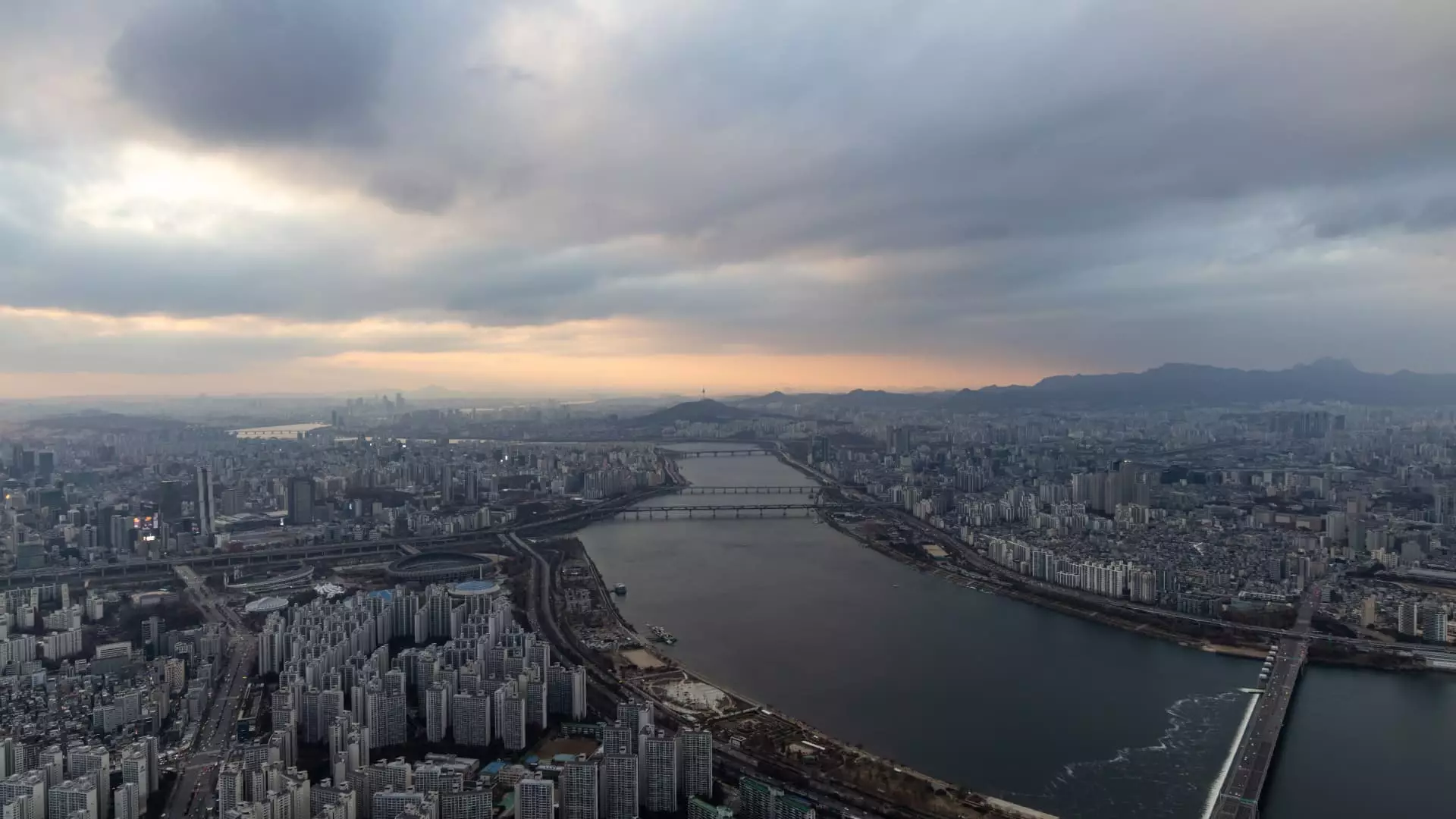South Korea, once a shining example of economic resilience in Asia, is now grappling with the harsh reality of a contracting economy. The initial figures for the first quarter of 2025 reveal a 0.1% decline in Gross Domestic Product (GDP) year-on-year, marking the first economic downturn since the final quarter of 2020. This disappointment is starkly contrasted by a previous robust growth of 1.2% in the last quarter of 2024. Despite optimistic forecasts from various economists who anticipated stability or even growth, South Korea’s economic reality has crumbled, unveiling an unsettling vulnerability that begs for immediate attention.
Construction Woes: A Concrete Collapse
A closer look at the contributing factors reveals that the construction sector has taken a significant hit, contracting an alarming 12.4% year on year. Such a steep decline in one of the economy’s foundational industries is nothing short of catastrophic. Construction acts as both a barometer and a backbone for economic health; when it falters, the ripple effects reach far and wide. With ongoing political unrest and stagnant domestic demand, this sector’s turmoil is emblematic of wider systemic issues. The well-being of South Korea’s citizens and businesses hangs in a precarious balance, exacerbated by a deteriorating global trade environment that cannot be ignored.
The Monetary Policy Tightrope
On April 17, the Bank of Korea (BOK) issued a warning: the outlook for GDP growth in 2025 has dimmed, dropping below a previously optimistic forecast of 1.5%. Despite maintaining interest rates at 2.75%, the BOK appears to be resigned to the likelihood of lower growth rates, which could force it to cut rates further in a bid to stimulate a stagnant economy. Industry voices are calling for more aggressive measures, with financial analysts predicting that the BOK may need to implement two to three additional rate cuts by year-end. The slow response to mounting economic strain raises questions: Is the BOK effectively managing this crisis, or are they merely shuffling deck chairs on the Titanic?
Political Uncertainty: A Cloud Over Economic Prospects
Compounding the economic downturn is the political chaos that has enveloped the nation. The impeachment proceedings against both former President Yoon Suk Yeol and Prime Minister Han Duck-soo have left a vacuum of leadership at a crucial time. With the streets of Seoul buzzing in anticipation of the upcoming elections on June 3, the stakes could not be higher. The reinstatement of Han and the removal of Yoon are two ends of a chaotic spectrum that reflect a government struggling for stability amidst a sea of public discontent and suspicion.
This political turmoil has dire implications for policy formulation, especially regarding economic reforms and trade negotiations. With elections approaching, any significant legislative changes are likely to be put on hold, leaving citizens and businesses with little faith in the government’s ability to navigate the challenges ahead. The looming uncertainties affect consumer confidence and are bound to stifle recovery efforts.
Trade Tensions: A Looming Crisis
Adding fuel to the fire are ongoing trade tensions exacerbated by external economic pressures. South Korea’s export-led economy heavily relies on trade relationships, particularly with the United States. Recent developments, including the reinstatement of a 25% tariff on steel and automobiles, threaten the country’s core industries. Despite a temporary suspension of reciprocal tariffs by the former Administration under Donald Trump, the looming shadow of these trade wars is palpable and detrimental.
Moreover, the prospects of negotiating a trade agreement appear bleak, particularly in light of South Korea’s electoral calendar. With a shifting political landscape post-election, negotiations could drag on indefinitely. An electoral shift towards a more protectionist approach could hinder South Korea’s access to critical markets, leaving its economy exposed to punitive tariffs without a clear path to recovery.
The Path Ahead: Hope or Hysteria?
As South Korea stands at this crossroads, the question arises: Will it choose the route of cautious optimism, working through its challenges with strategic reforms and popular support, or will it be swept away by the currents of political chaos and economic despair? The urgency for action has never been clearer. The implications of a disheartening GDP contraction combined with political instability and trade entanglements signal that reform must not only be swift but substantive.
The coming months will be pivotal, and how leaders respond to these pressing issues could redefine South Korea’s future. Whether citizens emerge empowered and united or beset by chaos and division will ultimately shape what lies ahead for the once-dynamic economy.


Leave a Reply